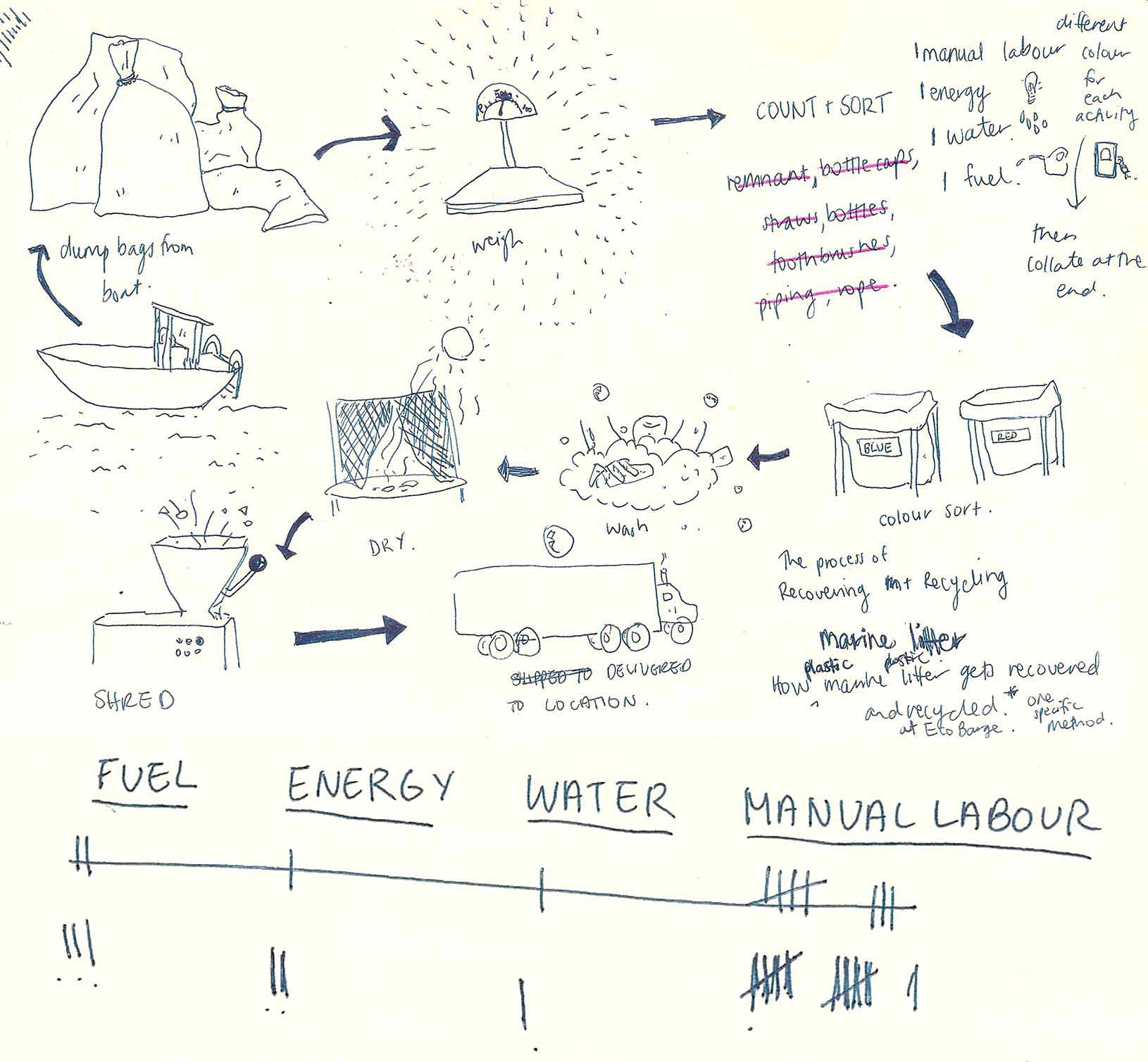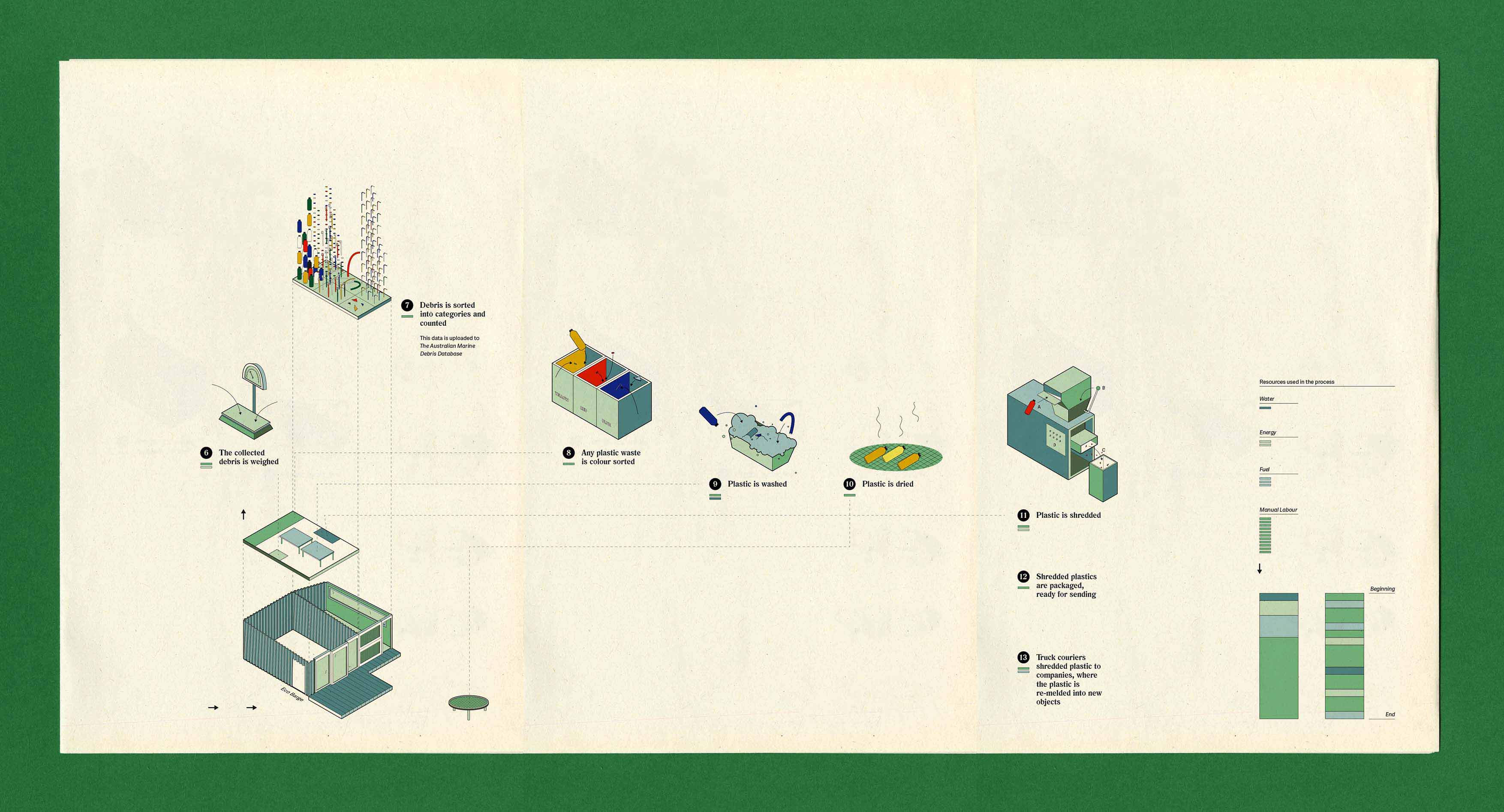Experiment
Dealing with Waste

Aim
To visualise how plastic still continues to exist even after a ‘solution’ to address them is enacted. This was intended to be achieved through diagramming what Eco Barge does with collected plastics, which is to prepare them for recycling—an extremely laborious and resource dependant process. This also sought to demonstrate that recycling is not as simple or easy as what it is often represented as (or as sustainable), and to make known that one of our solutions to plastic is not really a solution at all.
Methods


Reflection
Diagramming in this more factual manner reduced the story of what happens to plastic after collection to processes and steps—to facts that could inform consumers, but wouldn’t necessarily motivate, inspire or stimulate them. It became even more evident through this experiment that interpreting these plastics through fact-based lenses was uninteresting.
Insights
This experiment motivated a stronger desire to shift outside of my fact-based interpretation of the plastic—to see the plastic as more than a static waste object. More experiments needed to be undertaken to explore new lenses and how exactly to achieve this.